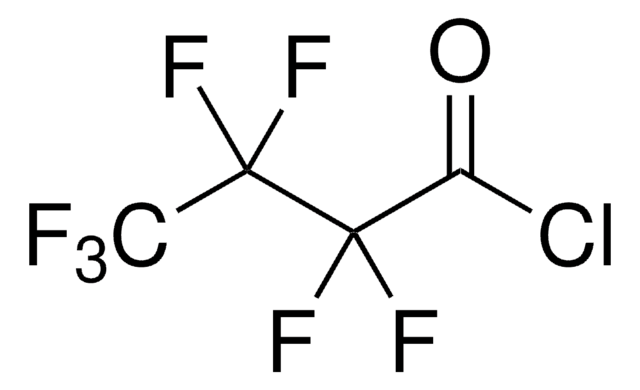267201
Platinum
wire, diam. 0.5 mm, 99.99% trace metals basis
Synonyme(s) :
Platinum element, Platinum gray
Se connecterpour consulter vos tarifs contractuels et ceux de votre entreprise/organisme
About This Item
Formule empirique (notation de Hill) :
Pt
Numéro CAS:
Poids moléculaire :
195.08
Numéro CE :
Numéro MDL:
Code UNSPSC :
12141734
ID de substance PubChem :
Nomenclature NACRES :
NA.23
Produits recommandés
Essai
99.99% trace metals basis
Forme
annealed
wire
Résistivité
10.6 μΩ-cm, 20°C
Diamètre
0.5 mm
pb
3827 °C (lit.)
Pf
1772 °C (lit.)
Densité
21.45 g/cm3 (lit.)
Chaîne SMILES
[Pt]
InChI
1S/Pt
Clé InChI
BASFCYQUMIYNBI-UHFFFAOYSA-N
Catégories apparentées
Description générale
Platinum (Pt) is a highly ductile, malleable and unreactive metal. It is resistant to corrosion and stable at high temperatures. Although resistant to hydrochloric and nitric acid, it dissolves readily in hot aqua regia to form chloroplatinic acid.
Application
Pt wire may be used :
- as a microelectrode-indicator electrode in voltammetry
- as a transvascular embolic agent
- to study chronopotentiometry of hydrogen peroxide with a platinum wire electrode or
- in gas detection instruments.
Quantité
400 mg = 10 cm; 2 g = 50 cm
Code de la classe de stockage
13 - Non Combustible Solids
Classe de danger pour l'eau (WGK)
nwg
Point d'éclair (°F)
Not applicable
Point d'éclair (°C)
Not applicable
Faites votre choix parmi les versions les plus récentes :
Déjà en possession de ce produit ?
Retrouvez la documentation relative aux produits que vous avez récemment achetés dans la Bibliothèque de documents.
Les clients ont également consulté
Voltammetry with Stationary Microelectrodes of Platinum Wire.
Laitinen HA and Kolthoff IM
The Journal of Physical Chemistry, 45(7), 1061-1079 (1941)
Hiroaki Akamatsu et al.
Japanese journal of clinical oncology, 43(6), 664-668 (2013-04-16)
Interstitial lung disease associated with gefitinib is a critical adverse reaction. When geftinib was administered to EGFR-unknown patients, the interstitial lung disease incidence rate was approximately 3-4% in Japan, and usually occurs during the first 4 weeks of treatment. However
Yao-Hsuan Tseng et al.
Biochimica et biophysica acta, 1830(6), 3787-3795 (2013-04-02)
Traditional antibacterial photocatalysts are primarily induced by ultraviolet light to elicit antibacterial reactive oxygen species. New generation visible-light responsive photocatalysts were discovered, offering greater opportunity to use photocatalysts as disinfectants in our living environment. Recently, we found that visible-light responsive
Catalysis: The accelerator.
Mark Peplow
Nature, 495(7440), S10-S11 (2013-03-15)
Liang Li et al.
Water science and technology : a journal of the International Association on Water Pollution Research, 67(11), 2451-2457 (2013-06-12)
This study investigated the mechanism and kinetic modeling of electrolytic degradation of ammonia with Pt/Ti anode. The results show that ammonia oxidation from direct oxidation or indirect oxidation with hydroxyl radicals was slow but can be observed under pH 9
Notre équipe de scientifiques dispose d'une expérience dans tous les secteurs de la recherche, notamment en sciences de la vie, science des matériaux, synthèse chimique, chromatographie, analyse et dans de nombreux autres domaines..
Contacter notre Service technique



